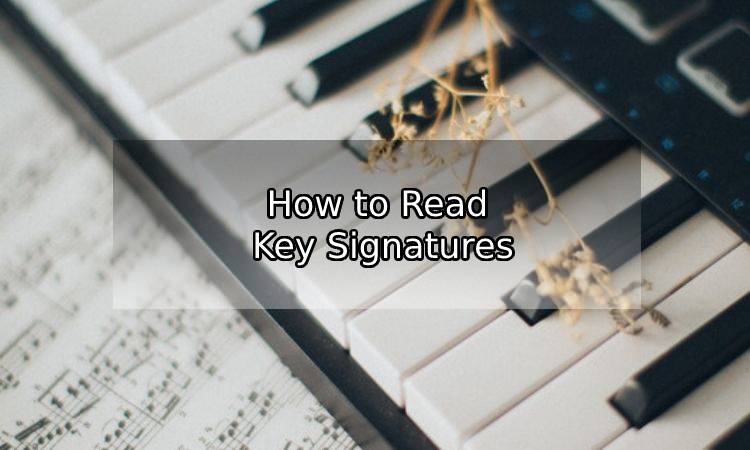The key of a piece of music identifies the specific pitch that provides a tonal center or point of focus for the piece. Composers write in certain keys to accommodate the range of a particular instrument or vocalist. Each key:
- Is named after a particular note that the music emphasizes. For instance, music written in the key of C likely begins and ends on C and contains many C notes and chords throughout.
- Specifies which notes to play as sharps and which to play as flats. For instance, a piece in the key of G major specifies that all F notes should be played as F#. Any note not specified as sharp or flat in a key should be played as a natural note.
Major and Minor Keys
A key can be either major or minor.
- Major keys: These keys contain 0–7 sharps or flats but are often referred to solely by their main starting note. For instance, C major is often called simply “the key of C.” Music played in major keys typically sounds bright and cheerful, such as the melody in Beethoven’s “Ode to Joy.”
- Minor keys: Each major key has an equivalent minor key, known as a relative minor key. A major key’s relative minor key has the same sharps and flats but is centered around a different main note and set of chords. For instance, music in the key of A minor (the relative minor of C major) will include more A notes and minor chords than a piece in C major. Music written in a minor key, such as the theme from The Godfather, sounds darker and more ominous than music written in a major key.
The table below lists the 15 major keys and their 15 relative minor equivalents, plus the specific sharps or flats for each key. Most music is written in one of these 30 keys.
| Major Key | Minor Key | Sharps or Flats | ||
|
C
|
A
|
none | ||
|
G
|
E
|
1 sharp (F#) | ||
|
D
|
B
|
2 sharps (F#, C#) | ||
|
A
|
F#
|
3 sharps (F#, C#, G#) | ||
|
E
|
C#
|
4 sharps (F#, C#, G#, D#) | ||
|
B
|
G#
|
5 sharps (F#, C#, G#, D#, A#) | ||
|
F#
|
D#
|
6 sharps (F#, C#, G#, D#, A#, E#) | ||
|
C#
|
A#
|
7 sharps (F#, C#, G#, D#, A#, E#, B#) | ||
|
F
|
D
|
1 flat (Bb) | ||
|
Bb
|
G
|
2 flats (Bb, Eb) | ||
|
Eb
|
C
|
3 flats (Bb, Eb, Ab) | ||
|
Ab
|
F
|
4 flats (Bb, Eb, Ab, Db) | ||
|
Db
|
Bb
|
5 flats (Bb, Eb, Ab, Db, Gb) | ||
|
Gb
|
Eb
|
6 flats (Bb, Eb, Ab, Db, Gb, Cb) | ||
|
Cb
|
Ab
|
7 flats (Bb, Eb, Ab, Db, Gb, Cb, Fb) |
The 15 Key Signatures
The key signature is a symbol placed between the clef and the time signature that indicates the key of a piece of music. Each key signature represents a major key or its relative minor key. For instance, the key signature for C# major has the same sharps as its relative minor (A# minor). This explains why there are 30 keys but only 15 key signatures.
How Key Signatures Work
Each key signature contains 0–7 sharps or flats placed on the lines or spaces that correspond to particular notes. The key signature’s sharps and flats indicate which notes in the piece should be played as sharps or flats. For example, a sharp symbol on the top line of the staff (F) indicates that every F in the piece of music should be played as F#. Key signatures contain either all flats or all sharps. Key signatures that include only sharps, such as G major and C# minor, are called sharp keys. Flat keys, such as F major and C minor, contain only flats. The only exception is the key of C major (and A minor), which has no sharps or flats.
The Key Signatures of Sharp Keys

Tricks for Deciphering the Key of a Piece of Music
- For sharp keys: Identify the last (rightmost) sharp in the key signature. The key is the next-highest note above that last sharp. For example, if the key signature has F#, C#, and G#, one note above the last sharp (G#) is A. The key of the piece is A major, or its relative minor (F# minor).
- For flat keys: Identify the second-to-last flat in the key signature. The note of that flat is the key of the piece. For example, if the key signature has Bb, Eb, and Ab, the second-to-last flat is Eb. The key of the piece is therefore Eb major (or C minor).
Exceptions to the Key Signature Rule
Accidentals are natural, sharp, or flat notes not indicated in the key signature.
- To indicate an accidental: The composer includes a sharp, flat, or natural sign just before the exceptional note. For example, if the key signature requires F’s to be played as F#’s, a natural sign before an F means that F, and not F#, should be played. The natural, flat, or sharp sign applies to the rest of the measure in which the sign first appears.

Changing Key Signatures Within a Piece of Music
Composers can change the key signature of a piece of music by placing a new key signature at the start of a measure at any point in the piece. The new key signature applies from the beginning of a measure and remains in effect until otherwise noted.


1 thought on “How to Read Key Signatures”
Comments are closed.